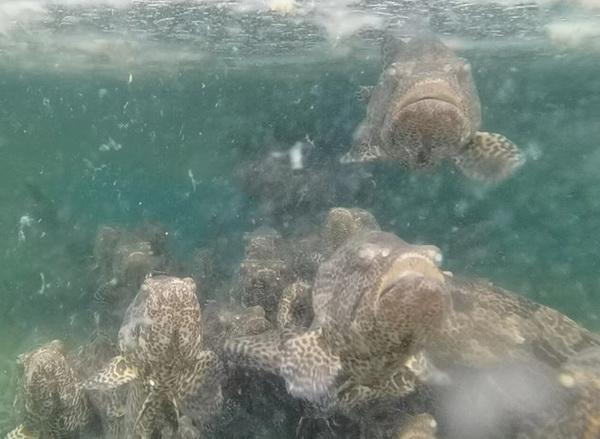How to effectively remove ammonia nitrogen from water at low cost?

How can ammonia nitrogen be effectively removed from water at a low cost to avoid its toxicity to fish and shrimp in circulating aquaculture systems?
Recirculating aquaculture is an efficient way to save water resources. However, because fish and shrimp will discharge a large amount of waste in the growth process, which contains a large amount of ammonia nitrogen, if not treated in time, it will cause toxicity to fish and shrimp and affect their growth and development, or even death. Therefore, in recirculating aquaculture, effective removal of ammonia nitrogen in water is very important. This paper will discuss how to effectively remove ammonia nitrogen from circulating water at low cost.
1. Source of ammonia nitrogen
In recirculating aquaculture, ammonia nitrogen mainly comes from the following two aspects:
1. Fish and shrimp feces: Fish and shrimp will discharge a lot of waste in the growth process, including a lot of ammonia nitrogen.
2. Feed residue: Nutrients such as protein and amino acids added to feed will also be converted into ammonia nitrogen if they are not fully absorbed and utilized.
Two, why to remove ammonia nitrogen?
1. High concentration of ammonia nitrogen will inhibit the immune system of fish and shrimp, reduce their resistance, easy to cause a variety of diseases.
2. Ammonia nitrogen will make the water become acidic, affect the pH value of the water, cause pressure on fish and shrimp, and affect their growth and development.
3. High concentration of ammonia nitrogen will affect the respiratory system of fish and shrimp, making it difficult to breathe, and even death.
3. Removal method of ammonia nitrogen
1. Biological filtration
Biological filtration is a common method to remove ammonia nitrogen from water. This method uses a number of ammoxidation of microorganisms to convert ammonia in water into nitrate, so as to achieve the purpose of ammonia nitrogen removal. The commonly used biofilters include active pool, drip filter, floating bed, etc. These filters are treated by adding microorganisms.
2. Plant purification method
Plant purification is a novel method to remove ammonia nitrogen from water. This method is to plant some absorbent plants in the water and use the plants to absorb the nutrients in the water to reduce the ammonia nitrogen content in the water. Commonly used plants include reed, bamboo and so on.
3. Aeration method
Aeration is another method of removing ammonia nitrogen from water. This method removes ammonia nitrogen by converting it from water to nitrate. This method requires the use of air pumps to increase the oxygen content of the water, thus promoting the growth and activity of microorganisms and improving the efficiency of ammonia oxidation.
4. Methods for removing ammonia nitrogen at low cost
1. Increase aeration time
In recirculating aquaculture, it is usually necessary to use aeration to remove ammonia nitrogen from the water. However, this method requires a large amount of electricity consumption, the cost is high. In order to reduce the cost, the aeration time can be appropriately increased to improve the aeration efficiency, so as to reduce the number of aeration and reduce energy consumption.
2. Use plant purification
Plant purification is an energy-saving method to remove ammonia nitrogen from water. Compared with biological filtration and aeration methods, plant purification method does not need to consume a lot of electricity and mechanical equipment, only need to plant some plants can achieve the removal of ammonia nitrogen in water. Therefore, plant purification is a relatively low-cost method to remove ammonia nitrogen from water.
3. Use good microbes
The use of good microorganisms in biofilters can improve the efficiency of ammonia oxidation and thus reduce energy consumption. Some microorganisms with high ammonia oxidation capacity include nitrifying bacteria, nitrobacteria, etc. Using these microbes can effectively remove ammonia nitrogen from water, reducing costs.
4. Control feed
In recirculating aquaculture, too much feed will cause fish and shrimp to excrete too much waste and increase ammonia nitrogen content in water. Therefore, feed control is an effective way to reduce ammonia nitrogen content. Proper feed control can reduce the amount of waste excretion, thus reducing the ammonia nitrogen content in water.
V. Summary
Recirculating aquaculture is an efficient way to save water resources. However, because fish and shrimp will discharge a large amount of waste in the growth process, including a large amount of ammonia nitrogen, if not treated in time, it will cause toxicity to fish and shrimp and affect their growth and development, or even death. Therefore, in recirculating aquaculture, removal of ammonia nitrogen in water is very important. The ammonia nitrogen in water can be effectively removed by biological filtration, plant purification and aeration. In order to reduce the cost, we can increase the aeration time appropriately, use plant purification method, use good microorganisms and control the feed amount.
